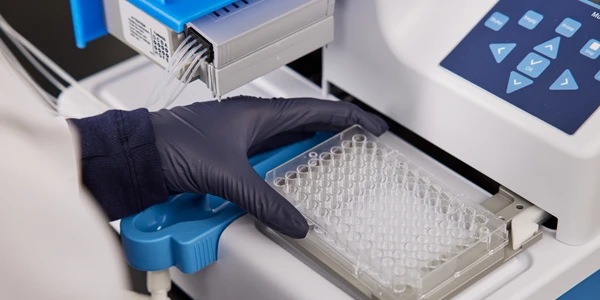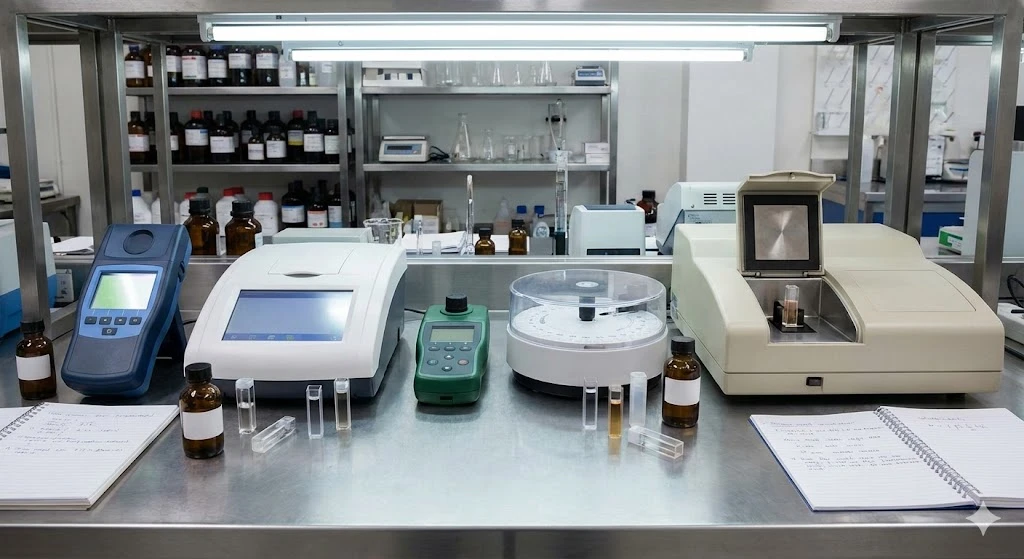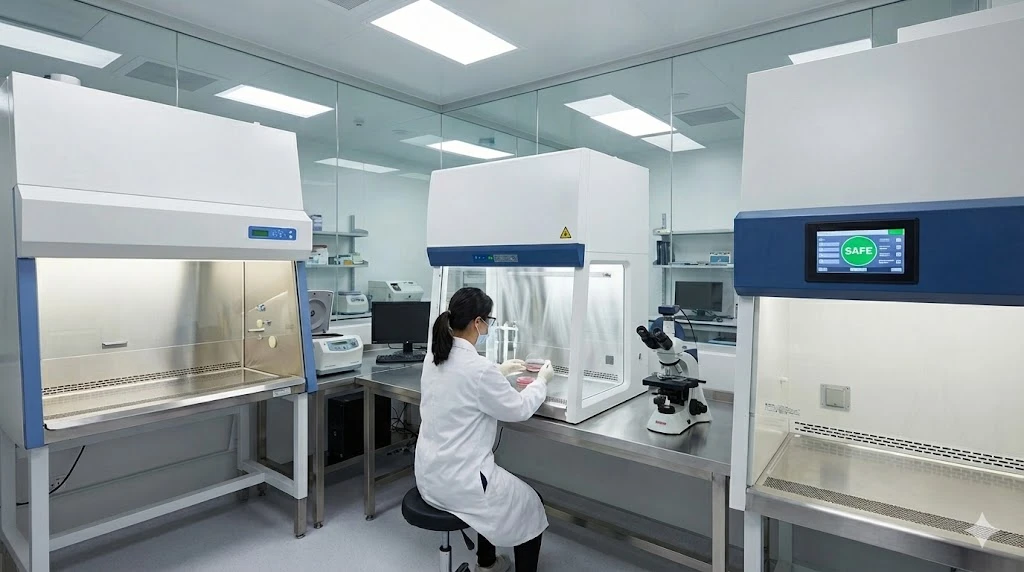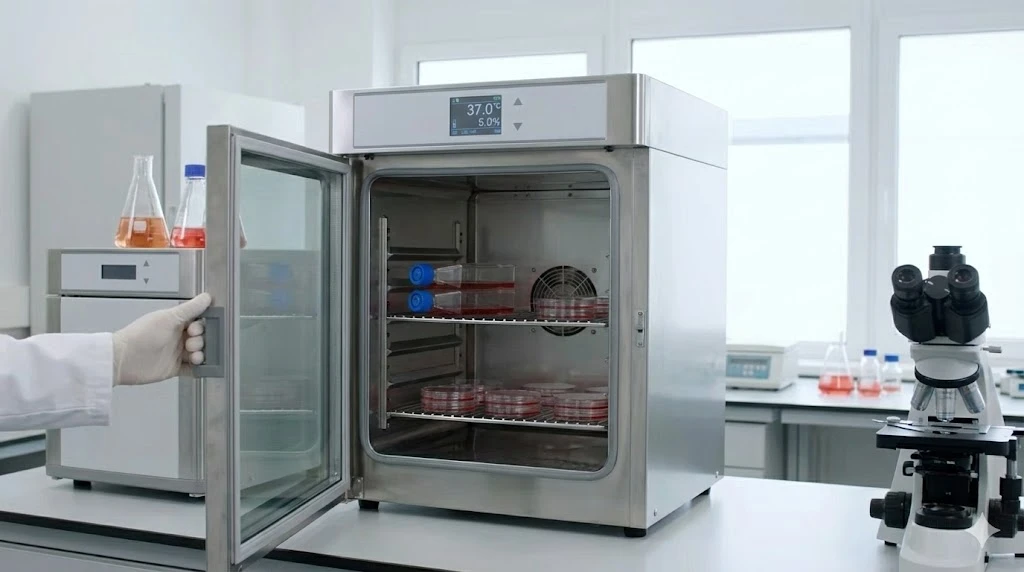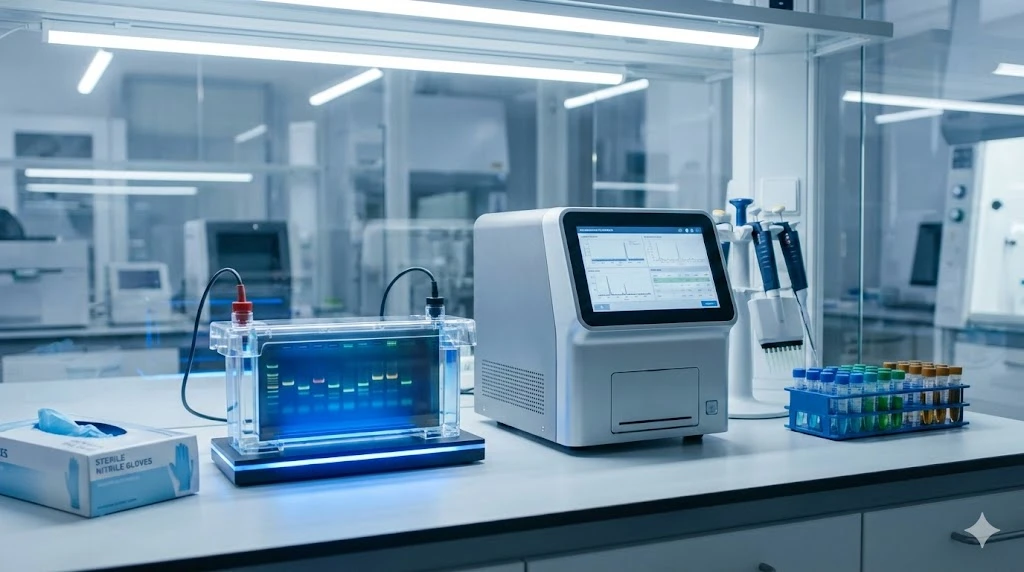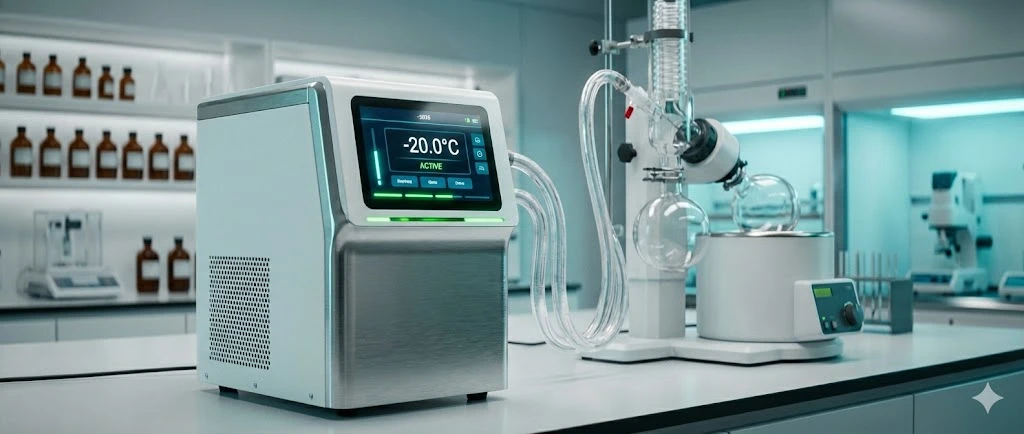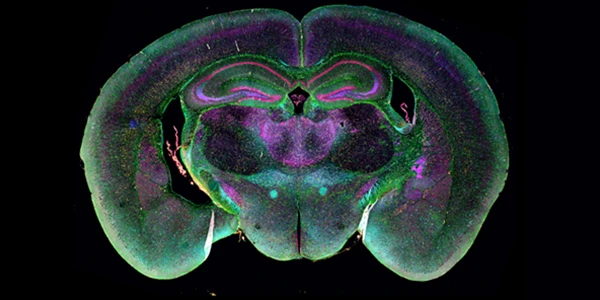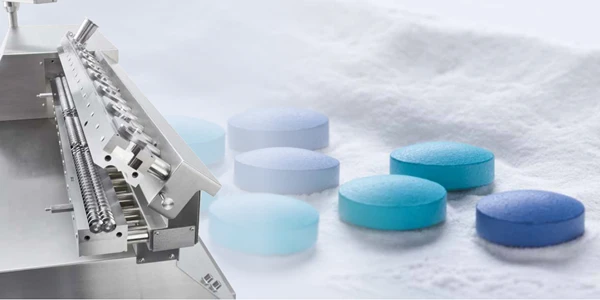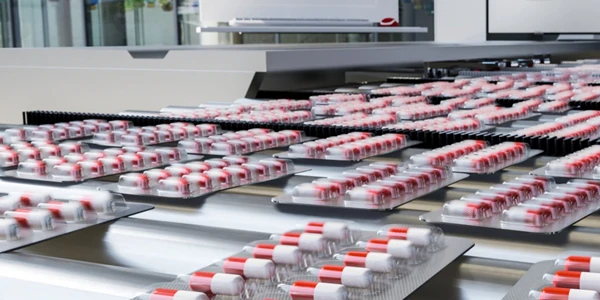Innovations in Gamma Counting for High-Throughput Screening
GEMINI (2025) The precision and scalability required for modern drug discovery necessitate continuous innovation in analytical methodologies. The technique of gamma counting remains indispensable for numerous critical assays, particularly in radioligand binding studies and radioimmunoassays (RIAs) essential for early-phase high-throughput screening. Modern laboratories executing massive compound libraries demand faster analysis, lower detection limits, and minimal sample volumes, pushing traditional counting systems toward specialized, automated platforms capable of handling millions of data points efficiently. This evolution from manual processing to fully integrated systems marks a significant shift in radiodetection methodology. Historically, sodium iodide doped with thallium, NaI(Tl), has been the mainstay in gamma counting due to its relatively high light output and cost-effectiveness. However, the pursuit of increased speed and improved energy resolution required for complex, simultaneous assays in high-throughput screening (HTS) has driven significant material science innovation. Modern, faster-decaying scintillators allow for higher count rates and reduced dead time, dramatically increasing the throughput capacity of contemporary gamma counters. Key material advancements include: Bismuth Germanate (BGO): Offers higher density and effective atomic number than NaI(Tl), resulting in greater detection efficiency, particularly for higher-energy gamma rays. This superior stopping power allows for smaller detector sizes without sacrificing sensitivity, a crucial factor in miniaturized HTS systems. Lanthanum Bromide (LaBr₃(Ce)): Known for exceptionally fast decay times (improving count rate capability) and superior energy resolution. The improved resolution is vital for distinguishing between multiple radioisotopes used simultaneously in multi-label gamma counting protocols, thus simplifying complex binding and competition assays. Solid-State Detectors (e.g., Cadmium Telluride - CdTe): While traditionally more complex, solid-state materials eliminate the need for photomultiplier tubes (PMTs) and offer excellent energy resolution in a compact format. Their use facilitates the development of highly miniaturized, multi-detector arrays perfectly suited for integration into compact HTS platforms. These material innovations directly address two core challenges in high-throughput screening: maximizing the number of samples processed per hour and enhancing the reliability of measurements, particularly with low-activity samples inherent to miniaturized assay volumes. The resulting instruments provide lower limits of detection and faster analysis cycles, critical metrics for pharmaceutical pipeline acceleration. The transition of radiolabeled assays into the high-throughput screening environment necessitated a fundamental redesign of the traditional single-well gamma counting methodology. The bottleneck created by sequentially processing hundreds of microplates has been addressed by adopting multi-detector array systems. Modern multi-detector gamma counters operate on parallel processing principles, enabling the simultaneous measurement of multiple samples, typically organized in a 96-well or 384-well microplate format. This parallelization is the single greatest contributor to the massive increase in throughput over the last decade. These integrated systems are designed to interface directly with robotic liquid handling systems, forming a seamless automated workstation. The process involves: Robotic Plate Transfer: Automated systems move microplates from the assay incubation stage to the counter's input stacker. High-Speed Loading: The counter rapidly indexes the plate into the detector array. Simultaneous Measurement: All wells in the plate (or a large fraction of them) are measured concurrently, drastically reducing the total counting time required for large high-throughput screening campaigns. Data Transmission: Results are immediately transferred to the central laboratory information management system (LIMS) for analysis. This automation capability ensures that the gamma counting step is no longer the rate-limiting factor in HTS workflows, allowing laboratories to fully leverage compound library diversity and accelerated synthesis protocols. The integration of efficient lead shielding within these multi-channel detectors minimizes cross-talk between adjacent wells, maintaining the measurement integrity required for precise screening. The sheer volume of data generated by modern high-throughput screening demands equally sophisticated data management and analysis solutions. A single gamma counting run on a 384-well plate generates hundreds of data points, and HTS campaigns often involve tens of thousands of plates. The software suite accompanying contemporary gamma counters is now as critical as the hardware itself. Modern software performs complex tasks far beyond basic count rate calculation: Automated Quality Control (QC): Dedicated algorithms automatically flag wells exhibiting unusual backgrounds, poor counting statistics, or spectral interference. This enables real-time identification of problematic plates or instruments, minimizing false positives and negatives that can derail a screening effort. Assay Specific Calculations: Software includes built-in templates for calculating key pharmacological parameters directly from raw counts, such as IC₅₀ values for enzyme inhibition, Kᴰ values for radioligand binding, and % Inhibition. LIMS and ERP Integration: Seamless communication with laboratory information management systems (LIMS) is non-negotiable. Data is automatically associated with the compound library ID, assay conditions, and operator metadata. This traceability is essential for regulatory compliance and efficient hit validation in large-scale high-throughput screening. Remote Monitoring and Diagnostics: Advanced software packages allow laboratory personnel to monitor instrument performance, assay progress, and data quality from remote locations. This feature is particularly valuable for maintaining 24/7 operations often required in aggressive HTS environments. This shift toward intelligent, integrated software transforms the gamma counting system from a simple measurement device into an integral data generation and validation hub within the larger automated laboratory ecosystem. Proper data management is essential to unlock the full potential of HTS technology. The enhanced sensitivity and speed of new-generation gamma counting instruments have cemented their role in foundational drug discovery and clinical research assays, particularly those reliant on established radiolabeled methodologies. The ability to rapidly process large sample numbers in microplate format is especially beneficial for two major application areas. RBAs utilize a radiolabeled ligand (often emitting gamma rays, such as ¹²⁵I) to determine the affinity of a test compound for a target receptor. In high-throughput screening, millions of compounds may be tested against a single receptor target. Traditional RBA: Involved manual filtration or centrifugation steps to separate bound from free ligand, often limiting throughput. Modern HTS RBA: Utilizes flash plates or scintillation proximity assay (SPA) beads, which contain embedded scintillants. Only radioligand bound directly to the plate or bead surface is detected by the gamma counting instrument. This homogeneous assay format eliminates time-consuming separation steps, making the process highly amenable to automation and rapid HTS readouts. The enhanced sensitivity of modern gamma counters is critical for accurately quantifying the very low signal generated by these homogeneous methods. Many drug targets are enzymes, and their function is typically assessed by monitoring the conversion of a substrate. When a radiolabeled substrate is used (e.g., ³H, which is often detected via liquid scintillation but sometimes measured by specialized low-energy gamma counting systems or dual-mode counters), the high-speed analysis capabilities are paramount. Drug Metabolism and Pharmacokinetics (DMPK): Modern gamma counters are utilized to analyze radiolabeled samples to determine absorption, distribution, metabolism, and excretion (ADME) profiles. Fast, precise, and automated counting minimizes the time between sample collection and result generation, significantly accelerating compound triage. Radioimmunoassays (RIAs): Though sometimes superseded by ELISA, RIAs remain critical for certain niche biomarkers and are highly dependent on the precision of gamma detection (e.g., ¹²⁵I). The ability of modern systems to handle plates rapidly ensures the preservation of the assay kinetics and accuracy in clinical and research settings. The combination of higher sensitivity, lower background, and increased speed in modern gamma counting systems ensures that radiometric assays, despite the rise of non-isotopic alternatives, retain a distinct advantage in assays requiring ultimate precision, signal-to-noise ratio, and the ability to work with complex matrices. The ongoing convergence of hardware and software innovations indicates a clear future for gamma counting as a vital and fully integrated component of automated drug discovery platforms. Future advancements will likely focus on even greater miniaturization, potentially moving towards chip-based detection systems and further integrating artificial intelligence (AI) for real-time spectral analysis and predictive QC failure detection. Laboratories committed to optimizing their high-throughput screening workflows must continuously evaluate and upgrade their radiometric detection capabilities to maintain competitive compound assessment speeds and data quality. The sustained evolution of detection technology ensures that the precision of radionuclide assays will continue to drive innovation in pharmaceutical and life science research. Gamma counting measures emissions directly from gamma-emitting isotopes (¹²⁵I, ⁵⁷Co, etc.), which are high-energy photons. LSC measures the light produced when beta-emitting isotopes (³H, ¹⁴C, etc.) interact with a liquid scintillation cocktail. While LSC often requires cocktail addition, modern gamma counting often uses solid scintillators or homogeneous proximity assays, which are inherently faster and more amenable to high-throughput screening automation. How do multi-detector gamma counters improve high-throughput screening efficiency? Multi-detector gamma counting systems measure multiple wells simultaneously, rather than sequentially. By using arrays of detectors (often 96 or 384 channels), these systems drastically reduce the time required to read an entire microplate, transforming the gamma detection step into a rapid, parallel process compatible with the high processing speeds demanded by high-throughput screening. What role does software play in modern gamma counting for drug discovery? Modern gamma counting software moves beyond simple data logging to become a critical analytical tool. It enables automated quality control (QC) checks, performs complex pharmacological calculations (e.g., Kᴰ, IC₅₀), and ensures seamless integration with laboratory information management systems (LIMS), providing the necessary data integrity and traceability for large-scale high-throughput screening campaigns. This article was created with the assistance of Generative AI and has undergone editorial review before publishing.
The Role of Advanced Scintillation Materials in High-Throughput Screening
Enhancing Automation and Throughput via Multi-Detector Gamma Counting
Feature Traditional Single-Detector System Modern Multi-Detector System Well Format Single tube or well 96-well, 384-well, 1536-well Measurement Sequential (Well-by-well) Parallel (Row or entire plate) Throughput (Plates/hr) Low (e.g., < 5 plates/hr) High (e.g., > 30 plates/hr) Automation Requires external handling Integrated stackers/robotics Next-Generation Software for Gamma Counting Data Analysis and LIMS Integration
Key Applications of Modern Gamma Counting in Drug Discovery Assays
Receptor Binding Assays (RBAs)
Enzyme Inhibition and Function Assays
Accelerating Discovery: The Future of Radiometric Detection in High-Throughput Screening
Frequently Asked Questions (FAQ)
What is the difference between gamma counting and liquid scintillation counting (LSC) in HTS?
